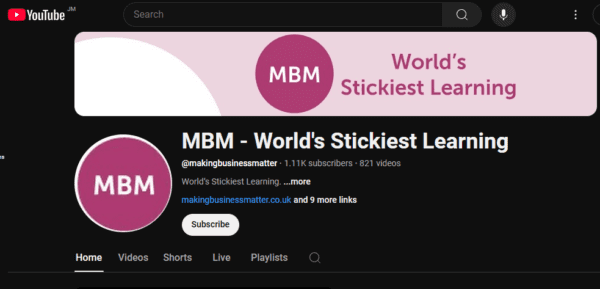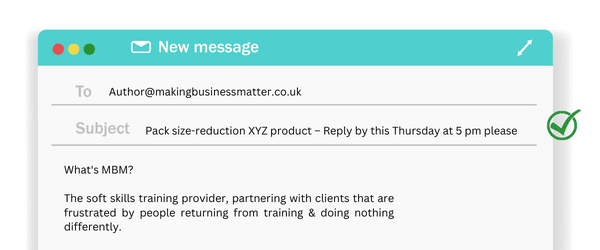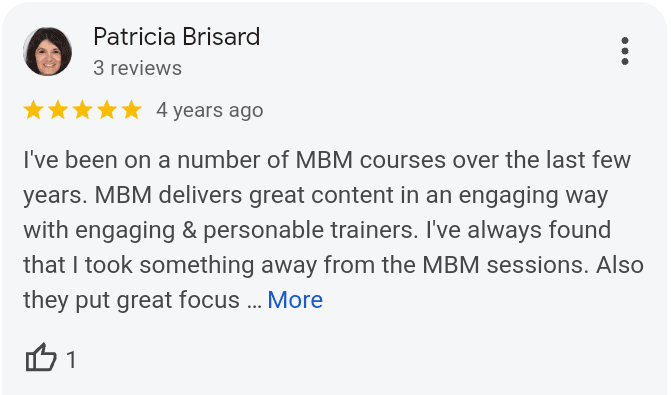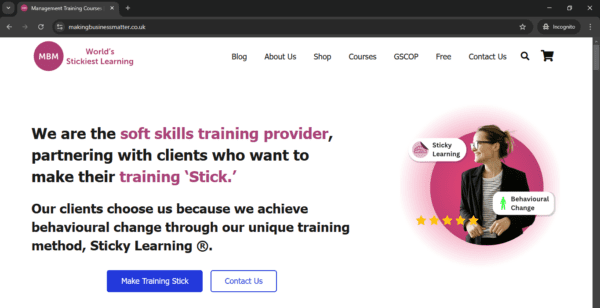Knowing the Importance of Effective External Communication
Communication, on all levels, is key to a company’s success. Having a proper communications strategy is essential. External communication is one of the 2 halves and key elements that make this happen.
Without an appropriate approach from everyone communicating with external partners, we are setting ourselves up to fail.
In this article, we will cover the following aspects of external communication:
- What is External Communication
- Importance of External Communication
- Internal V’s External Communication
- Different Tools to Use
- Barriers to Look Out For
- Use E.L.I.T.E for Better External Communication Results
All of these topics, including examples and explanations, will be shared so you have everything you need to get the best results.
What is External Communication?

Simply put, external communication is when you share information with anyone outside of the company. This includes customers, suppliers, contractors, and competitors.
It is important for any company to use this method of communication to promote brand and company awareness as well as to develop business relationships that allow the company to achieve their goals and targets.
Essentially, we need to use the right style and message when using external communication. We represent the company and brand. Therefore, how we communicate reflects the whole organisation.
Never underestimate the importance of external communication to the overall success of your business. Without it, you can’t:
- Build your business
- Promote your brand
- Sell your products and services
- Create a buzz about your company
- Celebrate your successes with the outside world
Importance of External Communication
In a November 2023 article on their website, USC (University of Southern California) shared a very useful article connected to their Master of Communication Management Online course.
“The Role of an External and Internal Communication Strategy in Business” clearly outlines the importance of external communication in business communication strategies. The impact is clear to see.
There are numerous reasons why having a proper external communication strategy is essential.
Here are just some of the reasons to properly invest in effective practices.
#1: Marketing Effectiveness
First, external communication is your way to share your marketing strategy. You are communicating directly with customers (past, present and future), investors, and other stakeholders.
Here, market your brand and products or services most attractively. Make sure you have a solid and effective marketing strategy that reaches all of your target audiences. More on that later!
Sticky Learning ® is 7 times more effective than 1-day training courses. Plus, you will get a Chain of Evidence proving your Return on Investment. Discover soft skills training that changes behaviours long term.

#2: Retaining Existing Customers
Next, your external communication plan needs to help you retain existing customers. Therefore, use existing data on your customer market segments to tailor-make eye-catching external communication.
These will create awareness of upcoming promotions, new products and services, and create opportunities to actively engage with your current customer base. Also, keep them interested by offering promotions or discounts as existing and loyal customers.
#3: Communicate With Suppliers
Here, use your external communication outlets to build and maintain relationships with your suppliers. You need them to provide your products and services.
Without timely and appropriate communication in this area, delays occur, wrong supplies arrive, or even, these partnerships break down, leaving you high and dry.
First, keep in regular contact with your suppliers. Then, keep your communication relevant with contract details or expectations of delivery agreements.
Also, with long-term suppliers, personalise the communication to recognise the business relationship and connections your two companies have.
#4: Promote Your Company Policies and Practices
Also, use external communication to promote your company’s beliefs and practices. Showcase your vision, mission, and values.
Then, share information about your company’s history and structure, highlighting expertise and unique selling points.
Additionally, allow everyone to access information about any sustainability practices, news and press releases, or other key information.

>> View our collection of nearly 50 Caching Cards <<
Internal Vs External Communication
There is a difference when we talk about internal and external communication and we need to be aware of not mixing the two up. This could damage our brand if we don’t hit the right note. Let’s take a look.
Internal Communication
When we communicate within the company there are some common practices we see happening. We tend to:
- Use less formal phrases as you know the people involved.
- Communicate in a way that creates a sense of engagement with the team.
- Increase the use of technical terms/jargon.
- Share practical rather than flowery wording.
- Include confidential information that doesn’t go outside the company. For example, financial reports, customer information, etc.
- Share important staff information.
Of course, it depends on WHO within the organisation you are communicating with. There are often times when a more formal approach will still be required.
External Communication
In contrast, we tend to use external communication to:
- Sell, sell, sell…… marketing is a key element.
- Share potential business proposals to generate new contracts/revenue.
- Promote the capabilities of the company to drive business.
- Be more remote to an audience we don’t directly know – neutral in our tone.
- Use expressive and emotional tones when selling to the outside.
Either way, both types of communication need reliable and useful information that connects with the audience.
Different Tools of Communication
As a Strategic Communications professional and CEO of the PR Alliance LLC, an entertainment and public relations agency. Keisha Brewer shared some very interesting insights in the TedX Talks “It’s Not Manipulation, It’s Strategic Communication”.

She talks about using communication for strategic purposes in everyday life as well as business. Her 2020 TedX Talk video has over 1.2M views to date and is still growing. Her words are inspiring and in particular, I connected to her following statement:
Communicating with purpose while showcasing value in order to achieve a goal.”
The following section shows how that can be achieved by using various different platforms.
There are numerous tools we use to communicate externally with our different audiences. So, it’s important to use them all in the right way.
#1: Social Media
So, where do we start when it comes to social media?
This topic on its own covers a variety of platforms and services. Ideally, have a specialised team member in your organisation handle your social media communication.
- First, use social media to your advantage.
- Also, maximise your outreach by rewarding customers for reposts and retweets, for example. This helps reach a wider audience.
- Additionally, make your external communication on social media appealing to the readers/viewers. There’s a lot of competition out there, so you need to stand out from the crowd.
- Finally, social media communication needs to be done very regularly to keep up with the competition, in comparison to a press release which may be a one-off thing.

#2: Email
Now, when you communicate externally via email there are certain rules to follow.
Remember, you are representing the company. So, ensure you follow the below-mentioned practices.
- To = action. CC = information. Send the email to the right people.
- Ensure you add all attachments before hitting send.
- Have a subject line that grabs the reader’s attention.
- Use bullet points, short paragraphs or bold/underlined key phrases to emphasise important information and points.
- Ensure the main message of your email isn’t too long – instead, attach additional information or website links for further details.

#3: Online Review
Many companies are reviewed online for their services and products. Online reviews can make and break a company.
Negative online reviews damage a company’s reputation, break trust with current and future customers, and directly hit the bottom line.
As a professional in the Hospitality industry, it can be crushing to read 1 and 2-star reviews of your hotel/property. I am sure, that if your company receives customer reviews that include negative reviews or ratings, you feel the same way as I do.
From experience, as the person replying to these reviews, I recommend the following steps:
- Remain neutral in your response.
- Avoid attacking the customer for their feedback.
- Address specific details that the customer has showcased.
- Respond promptly – ideally within 24 hours.
- Empathise – acknowledge without accepting blame (“We understand that this has caused you to feel/We appreciate that this situation caused ……”)
- Thank the person for sharing their feedback.
- Remain courteous and respectful.
- Offer a lifeline for the customer to come back to your company.
Reply to online reviews. Appreciate the positives, however, acknowledge the negative ones with specific details, including corrective action.

#4: Company Website
Now, this is important.
Your website MUST be up-to-date. Also, it must be factual.
When we communicate with our external audiences we need to be honest, including pictures and effectiveness. Making false claims just comes back to haunt you later.
Therefore, have a system in place for periodical and regular reviews of all your website content, including images.
Invest in getting a professional web designer, on a part or full-time basis to make this happen. Also, check what the competition includes on their sites. Ensure yours not only matches their content but actually has additional information that gives your site the spotlight.
External communication using our company website is essential.

#5: Adverts
Here, you want adverts that immediately grab the audience’s attention. Also, your adverts must be on-brand. Your advert tag lines must directly connect with the product or service you’re promoting.
Also, discounts or bulk buying helps drive attention. In terms of external communication, adverts enable you to have fun as well as create awareness of your brand and products/services.
Most companies use a mix of all the above-mentioned platforms for external communication. Therefore, ensure you follow the correct practices for each platform as each one has different approaches.
Also, ask the experts. Get professional advice on how to use each platform effectively for better results.
Barriers to Look Out for
Getting your external communication strategy right is important. Awareness of potential barriers is also important.
Let’s look at some common barriers, and how to overcome them.
#1: Length of Your Message
First, avoid making your message too long or complicated.
Think of the last time you received a sales pitch from anyone and it went on, and on, and on. For sure you tuned out pretty quickly.
Therefore, avoid boring the audience to tears by sharing too much information at once. Bite size is better and keeps the audience wanting more.
Teasers are a great way of making that happen. Also, ensure one external communication has one message. Avoid sending multiple messages in one go, otherwise your audience gets confused.
Keep it catchy to keep them hooked.
#2: Use of Jargon
Next, jargon is useful for internal communication. However, it confuses people who don’t understand the terms or have the specific knowledge we use when talking to others in the field.
For external communication, avoid using jargon without being ready to give further explanations. This also applies to abbreviations.
#3: Relevance to the Audience
Another point, in terms of connection and engagement, is to make your content relevant to the target audience.
For example, when Making Business Matter wants to promote their training courses or coaching cards, they select their distribution list carefully, knowing it will impact some audiences more than others.
So, ensure the content is relevant to the audience so the interest is there.
#4: Lack of Clarity
Now, one point I often find is that some companies speak to their external contacts in the same way they would communicate with their internal audience.
Here, we see over use of technical terms or industry-specific language that not everyone will be able to understand. This is a big turn-off and creates confusion.
So, ensure your message and the language used makes sense to the general audience.
Also, divide your external communication into parts or sections that are easy to follow. Then, have someone from outside the company take a look and provide feedback. It can help set the right tone.
#5: Lack of Credibility
In today’s world of “Fake News”, and countless unreliable sources of information across all communication platforms, trust and credibility are essential.
No company is successful when sharing information that reveals lies or false details. This relates to everything from customer service to product reliability, to price promises.
Nobody likes to feel duped. Therefore, ensure your external communication is always credible.
This includes but is not limited to, fact-checking, proper competitor checks, and real descriptions of products and services.
You gain nothing from trying to pull the wool over your audience’s eyes.
#6: Frequency of Communication
So, I’m sure you’ve experienced it – the company that simply won’t take NO for an answer. Don’t fall into the trap of over-communicating in terms of frequency. It can damage your brand or company.
Instead, reach out and promote how they can contact you back if they’re interested. Be sure to follow up, but not straight away. Give a little time between the first contact and the next communication.
To Wrap Up

External communication is an essential tool for all companies to use. And there is an effective way to put that tool to good use.
Use E.L.I.T.E. to make your external communication more effective.
E – Educate
First, ensure your communication educates your audience about what you are doing and plans for the future. Past, present, and future! Your communication includes all 3 elements for an all-around communication experience.
L – Length
Next, avoid long communications. People avoid them. Match the length of your communication to the tool you’re using. Adverts, Instagram, etc, need short, catchy appeal. Brouchers, articles, and media releases need greater detail.
I – Interest
Also, regardless of the length, drive interest! Use attention-catching subject lines and headlines. Additionally, use visuals that retain the reader’s interest and create association and connection with your content.
External communication reaches a variety of audiences. Your content from start to finish needs to catch their attention and keep them hooked.
T – Target
Next, know your target audience and how to reach them. Promotions need to hit an audience with such force that they can’t resist.
Use visuals, catchphrases, and even nostalgia to draw people in. Editorials need depth and relevance. Remember, your audience doesn’t always know you, so your writing style needs to resonate with a wide audience scope.
E – Evolve
Finally, look at ever-evolving technology and systems that help you with your external communication. It can change in a heartbeat. So are you ready? Up-to-date? In line with your competition?
Review these aspects regularly and stay ahead of the crowd.
Be sure to come and check out our website where we have additional tools and resources available on a variety of topics that can help you and your company be the best you can be.
Have a look at our selection of 30+ decks of coaching cards, read more of our 1000+ blog articles, and see what training you and your team can benefit from.
We’re here to help you achieve GREAT things moving forward.




